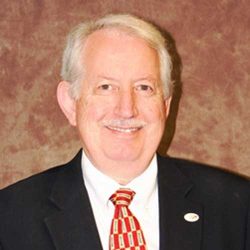Lubricant and lubrication design, as well as cooling architecture are critical for drive unit (electric motor and gearbox) performance and durability. The primary goal of this presentation is to highlight the significance of designing fluid at the system level, i.e., fluid being part of the system design, instead of the traditional trial and error approach (without quantification during hardware design). To date, it has been seemingly a popular option to push for lowering fluid viscosity and cost-effective raw materials to further achieve cooling efficiency, energy efficiency, and reducing build cost. However, that approach has not been effective nor necessary in lowering overall system cost, especially factoring the vehicle lifetime performance, maintenance, and overall energy cost. In this presentation, based on one of Tesla’s drive unit designs, Dr. Zhang breaks down Tesla’s approach on solving the complexity of electric vehicle lubrication and lubricant design, in terms of fluid optimization, viscosity tuning, and meeting durability requirements, while gaining system level cost. Energy efficiency breakdown of the drive unit is discussed as it is closely related to lubricant and lubrication design. In addition, the author discusses various fluids (from other OEMs) in the same system lead to a significant performance delta in terms of energy saving and system protection. It is clear that fluid design needs to be integrated into hardware design instead of pursuing the extreme in lowering viscosity.
Transition towards carbon neutrality is a journey but we cannot afford to continue waiting for the perfect zero-emissions technologies. Leveraging all lower-emission solutions that are already within our reach will help societies combat climate change more effectively, already today. Renewable fuels and renewable and circular solutions to polymers and chemicals production are some of the most impactful solutions already available today to help heavy-duty industries like aviation, road transportation, and plastics to reduce reliance on fossil fuels.
Neste is the world’s leading producer of sustainable aviation fuel and renewable diesel and a forerunner in developing renewable and circular feedstock solutions for polymers and chemicals. In 2023, Neste launched a lower-emission maritime fuel in the market, and announced a joint collaboration with other energy companies in Finland to boost the production of renewable hydrogen. The company was established as a local oil refiner in 1948, but it embarked on a transformation journey to focus on developing renewable solutions decades ago, when climate change was an inconvenient truth and there were no policies or incentives available to support such efforts. In this session, Carrie Song will share Neste’s inspiring stories achieved with its customers and partners adopting its renewable and circular solutions, as well as opportunities, actions for businesses in the APAC region to leverage and take so they can be part of the driving force in achieving carbon neutrality and a more sustainable future.
The need for sustainable transportation fuels is a critical issue in all societies globally. Post-Covid the need for personal face-to-face (F2F) interaction and international travel has been reinforced. We can’t do without it. For ground transportation, electrification with batteries in electric vehicles (EVs) is growing rapidly. Though this has distance limitations. For long-distance air transportation, the use of sustainable aviation fuel (SAF) must grow as quickly as we can create it. However, this is neither easy nor cheap.
SAF and biofuels have both technical and ESG challenges. The key to the S-sustainability is the use of bio renewable and recycled feedstocks. These are in limited supply and have wide variability nationally and regionally. We don’t want to have another food vs. fuel conflict, as we have seen in the past. What we need to determine is how best can we create the most sustainable and cost-effective ways of producing SAF and biofuels?
One of the tried and proven ways of determining how best to produce SAF and biofuels, or any hydrocarbon fuel, is by utilising process simulation. To do this accurately each potential feedstock must be characterised, mathematically/digitally, so that the behaviour of each molecule, or groups of molecules, can be determined in a variety of process equipment. Simulation also offers a very effective way of tracking the Carbon Intensity (CI) of each molecule as it passes and changes through a process which can provide the CI audit trail of any fuel product. A critical step in certifying a fuel product’s greenness.
Our obligation, as the learned representatives of an industry sector and international fuels and lubricants institutions, is that we must address all aspects of creating this sustainable part of the cyclic economy. In turn we must communicate these to the regulatory authorities and to the public to create a clear understanding of the technical and ESG issues. This is so that the most effective regulatory policies are put in place which most benefit society both today and create a cleaner environment in the future, for our children and grandchildren.
This presentation will delve into some of the diverse feedstocks, ranging from waste oils and agricultural residues to algae and bulk agricultural crops, and the process synthesis routes for making SAF and biofuels. Emphasis will be placed on the scalability and efficiency of these feedstocks, considering their potential to meet the growing demands of the transportation sector while minimising the environmental impact. It will present the status of the state-of-the-art in process simulation technology which can be used to select economically viable and sustainable SAF and biofuel production schemes, create and design new processes, optimise their operations, track CI, energy efficiency and minimise lifecycle cumulative emissions.
With the rapid growth in the market share of new energy vehicles (NEV) in China, China 7 criteria and greenhouse gas (GHG) emission regulations will play a vital role in meeting China’s long-term GHG emissions control goal, while continuing to reduce toxic pollutants from the automotive sector. This presentation will focus on China 7 light- and heavy-duty emissions regulations, and the potential technology options to meet the regulation. For comparison purposes, the upcoming Euro 7, U.S. EPA light-duty Tier 4, heavy-duty 2027 criteria, and Phase 3 GHG regulations will also be briefly discussed.
For light-duty internal combustion engine (ICE) vehicles, since gasoline is the dominant fuel, tighter control of evaporative emissions from vehicle fuel systems and refilling operations will be an important aspect. Based on the analysis of the emissions results from China 6 vehicles, cold-start and other fuel-rich operations result in significantly higher criteria emissions; therefore, they will be the key target. GHG emissions (CO2, N2O, and CH4) requirements will be harmonized with the fuel consumption standard. More stringent particulate matter (PM) and particulate number (PN) requirements will likely mandate particulate filters for all light-duty ICE vehicles.
For heavy-duty ICE vehicles, PM and nitrogen oxides (NOx) will remain the major focus, while NOx emissions from cold-start and low-load operating conditions will be more closely scrutinized. GHG emissions will be limited and harmonized with heavy-duty vehicle fuel consumption standards, while limits will likely be set for both the weight-class-based vehicle model and the corporate average of all heavy-duty (HD) vehicle models.
On-board diagnostics (OBD) and on-board monitoring (OBM) will be the primary tools for emissions-related component defect detection and emissions monitoring. The telematics will require all HD vehicles to transmit real-time global positioning and emissions-related data to authorized data centers. Real-world Drive Emissions (RDE) measurement will be the key in-use compliance tool, and it covers all vehicle operating conditions under a wide range of ambient conditions. The RDE test will incorporate both criteria and GHG measurement, and for criteria emissions analysis, a 3-Bin method—a classification system used primarily for categorizing the emissions performance of vehicles—will likely be employed, including a cold-start bin, a low-load bin, and a mid-to-high-load bin.
It is expected that the draft China 7 regulation will be published by the end of 2024, and it will be implemented before 2030.

Managing Director, Verband Schmierstoff – Industrie e.V.
(German Lubricant Manufacturers Association)
In Europe, there are numerous efforts underway to achieve carbon neutrality by 2050. The transport sector is a crucial area where conventional fuels can be replaced by eFuels, and battery electric vehicles (BEVs) are expected to play a significant role in passenger transportation. Internal combustion engines will only survive if fossil fuels can be replaced by biofuels. Several laws are being prepared to establish regulations for e-fuels. This presentation outlines the standards for assessing eFuels, including those set by the planned Euro 7 emission standard, the CO2 emission standards for new passenger cars and new light commercial vehicles’ Regulation (EU) 2019/631, and national regulations such as the German BimSchV. While the legislation is still incomplete and subject to change, this presentation will provide an overview of the current status.
This presentation will explore the key cost-value dilemma.
Many organizations can bring sustainable solutions to the market and many customers would like to access more sustainable options.
How can we make sustainable solutions affordable, and how can we educate the market and move the dialogue from cost to value?
The presentation will provide some insights and ideas to bring this debate further; it will touch on key barriers and hurdles to deliver more sustainable solutions, as well as on key enablers, including some examples of possible solutions for our industry.
The urgency to address global warming and curb emissions has become increasingly evident, requiring comprehensive strategies across industries’ entire value chains. It is crucial to emphasize the need to address SCOPE 1, 2, and 3 emissions and urge all stakeholders within respective industries to unite and act in solidarity.
One notable industry initiative that exemplifies effective organization and collaboration across the automotive industry is Catena-X. It establishes a standardized and secure framework for data sharing, allowing companies across the automotive value chain to benefit from improved transparency, efficiency, and innovation, and playing a vital role in driving the automotive industry towards a more sustainable future. As the first open and collaborative data ecosystem, it could also shed light for other industry collaboration.
BASF, as a leading chemical supplier to various industries, is actively involved in digital transformation and sustainability of the sectors through various initiatives and product solutions. In the chemical production sector, BASF has undertaken notable endeavors such as: piloting the world’s first large-scale electrically heated steam cracker furnaces; investing in renewable energy; chemcycling to recover valuable feedstock from plastics, an innovative approach of using renewable/recycled feedstocks via mass balanced approach.
In conclusion, addressing global warming and achieving carbon reduction goals requires collaboration and collective action across industries. By embracing renewable energy generation, advancing carbon reduction technologies, promoting effective recycling practices and innovative circular economy approach, BASF serves as a catalyst for sustainable development and inspires others to join the movement towards a greener future.
While lubricants by default can support industries to increase efficiency and reduce emissions, lubricant producers themselves also need to reduce their emissions ultimately to zero. The presentation shows typical sources of emissions of a lubricant supplier and how collaboration is needed alongside the value chain to reduce these ultimately to zero and to develop harmonized methodologies to help to calculate product-related emissions of lubricants (PCF).
The quest for sustainability is transforming the competitive landscape and is resulting in a shift in the way we think of products, technologies, processes, and business models upsetting today’s status quo. Key to this is innovation.
bp is committed to driving innovation through their transitioning from an international oil company to an integrated energy company, pursuing a pathway to achieving its ambition to reach net-zero greenhouse gas emissions by 2050 or sooner and improve people’s lives. Castrol’s PATH360 strategy, aimed at saving waste, reducing carbon, embracing circular thinking, and supporting new and growing sectors complements bp’s net-zero ambition.
This presentation will delve into the synergy between these two factors by exploring several technology-related initiatives from both the fuels and lubricants sides. These examples showcase areas such as improved efficiency, reduced emissions, customer-centricity, enhanced product performance and/or are the frontier of technology innovation.

The world continues to face the challenge of securing adequate energy supply while enabling the energy transition. This transition brings increased uncertainty but also creates opportunities to provide solutions. Synthetic lubricants are helping to enable the energy transition to a lower-carbon future in select technical applications and can play a bigger role going forward.
In his presentation, Alistair Westwood will explain the role of synthetic base stocks and lubricants in the energy transition, the challenges, and how ExxonMobil (and indeed the industry) is responding. His presentation will cover:

Globally, there is increased interest and momentum towards efforts to address greenhouse gases. In an effort to meet these challenges, many OEMs and industry stakeholders across the lubricant value chain have announced plans to achieve various carbon and/or emission reduction goals by a specific time frame.
In both passenger car and heavy-duty automotive product lines, Chevron Oronite is continuing to invest in lower carbon solutions, focusing on three key areas. First, we are developing additive solutions for key propulsion technologies using alternate fuels such as Bio-fuels (bio-diesel, bio-ethanol), H2, and compressed natural gas. Second, we are developing formulations specifically designed for the usage of re-refined base oil (RRBO). Third, we are investing in hybrid and plug-in hybrid applications, along with enhanced fuel economy solutions.
In this presentation, we will share Chevron Oronite’s journey towards the development of lower carbon solutions in the automotive space, with examples from H2 ICE and RRBO. The discussion will include the findings of our latest work, including additive and lubricant formulations that we have developed as well as sharing engine and field test data demonstrating compatibility and usage.

Evolving regulations and consumer trends will continue to drive lower emissions in the automotive industry. This trend will in turn drive growth in the adoption of alternate powertrain vehicles such as BEVs, FCEVs, HEVs and PHEVs. In order to meet these trends, the automotive industry is currently developing next-generation EV hardware designs aimed at maximizing energy efficiency; however, those next-generation EV hardware designs will require new, optimized, high performance, and low viscosity fluids. For example, integrated electric drive units, which combine electric motors, power
electronics and a gearbox into a single component, will challenge lubricant formulators to develop low viscosity fluids that balance traditional lubrication with electro-performance, material compatibility, and thermal management (cooling). Therefore, base oil selection will continue to be a critical consideration when formulators are developing next-generation EV Fluids.
This presentation summarizes recent evaluations documenting benefits in energy efficiency and other key EV fluid performance areas, made possible via a new low-viscosity/low-volatility PAO technology platform. The results demonstrate that this novel base-stock technology can enable formulators to develop next-generation fluids with improved performance for EVs.
The lubricants industry can play an essential role in our planet’s sustainability transformation. After all: “Without lubricants, nothing moves”.
While overcoming friction has always been the key characteristic for lubricants, more is needed to fully embrace sustainability and enable businesses a green transition to avoid future financial penalties and use resources mindfully.
In this presentation, Evonik Oil Additives shares its transformation and sustainability journey. Our approach to reduce overall carbon emissions comprises four different phases: Vision, Evaluation, Reassessment, and Transformation.
Vision involves setting clear sustainability goals and developing a transition timeline towards sustainable lubricants. For Evaluation, an assessment of the overall environmental impact cradle-to-grave, including the carbon footprint, handprint, and end-of-life of our viscosity modifier portfolio is necessary. The Reassessment phase involves reviewing the status quo and identifying opportunities to implement the highest performing lubricant while at the same time enabling the path towards a circular economy. During the Transformation phase, these changes should be executed to embrace the next generation of viscosity modifiers within the lubricants industry.
With this outlined approach, Evonik Oil Additives showcases future opportunities for the lubricant market to reduce environmental impact while maintaining overall efficiency. This will give a new spin to the above mindset: “Without sustainable lubricants, nothing moves”.
The chemical industry is facing global regulatory challenges. The lubricants and greases industry are seeing common antioxidants that are already or may be in the near future labelled reprotoxic or environmentally hazardous, and antiwear additives containing heavy metals that are under continuous scrutiny by regulatory bodies who want to minimize environmental impact. New additive options are under development to meet these challenges while maintaining the performance of traditional technologies.
This study explores a new combined antiwear and antioxidant technology that can provide equivalent performance to traditional additive technologies found in automotive and industrial lubricants and greases. This new additive technology demonstrates comparable antiwear performance and antioxidancy to traditional additives used in driveline fluids, industrial lubricants and greases. The data generated in this study indicates that this new additive technology can replace traditional antiwear and antioxidant technologies, and minimizes environmental impact by removing the need for heavy metal containing antiwear additives in lubricants and greases.
Additionally, this study explores alternative non-reprotoxic, non-PBT/vPvB diphenylamine-based antioxidants, which provide equivalent performance to traditional diphenylamine-based antioxidants commonly used in the lubricants and greases market. This antioxidant retains synergistic effects when used in combination with hindered phenolic antioxidants, minimizing the need for extensive reformulation of additive packages and finished lubricants. Performance and regulatory evaluations have been conducted on engine oil, industrial lubricant and grease applications to show this new diphenylamine can enable the long-term production of high-performance lubricants and greases.
The aviation industry, a significant contributor to global carbon emissions, is facing increasing pressure to adopt sustainable practices. We will delve into crucial advancements in the production of Sustainable Aviation Fuel (SAF) and its transformative impact on the aviation sector, outlining the trajectory from the current state to anticipated challenges beyond 2030.
SAF is a critical linchpin in the aviation industry’s decarbonization efforts, driven by a growing awareness of climate change and environmental concerns. The surge in demand for SAF is notable, propelled by voluntary commitments from airlines and governmental mandates.
The current emphasis is on HEFA-SPK SAF. This inaugural wave represents a significant leap forward, as HEFA-SPK SAF is derived from renewable feedstocks such as vegetable oils and animal fats, providing a compelling alternative to traditional fossil jet fuels.
Subsequent waves of SAF revolve around the AtJ process, a transformative pathway converting alcohols, including ethanol, into jet fuel. This approach not only ensures a sustainable aviation feedstock through the utilization of bioethanol but also opens an attractive market for repurposing declining gasoline, especially in Asia.
Another notable avenue is the FT-SPK process, leveraging biomass and waste to produce SAF. Abundant feedstocks across Asia make this process particularly promising, offering a substantial contribution to the sustainable aviation fuel landscape.
The concept of decentralized PtL plants emerges as a potential solution. By localizing SAF production, the aviation industry aims to enhance supply chain resilience, particularly in regions where traditional alternatives may be limited or where local conditions favor this approach.
We will explore emerging technologies, such as Methanol to Jet (MtJ) technology. pyrolysis of waste polymers, and other innovative approaches. All pathways are needed to achieve aviation’s net-zero ambition.
Maritime decarbonization is the process of reducing greenhouse gas (GHG) emissions from the global maritime sector, with an overall goal of placing the sector on a pathway that limits global temperature rise to 1.5-degrees Celsius.
The revised GHG Strategy as adopted in IMO MEPC 80 now aims for reaching net-zero by 2050. The GHG Strategy also addresses life cycle GHG emissions from shipping.
A fuel technology transition is already underway in the maritime industry, with half the ordered tonnage capable of using LNG, LPG, or methanol in dual-fuel engines, compared to one-third of the tonnage on order last year.
The impact will be increased costs for individual shipowners from technology, carbon-neutral fuels, and/or carbon price. Commercial drivers will also be important, as GHG performance will affect commercial attractiveness and long-term profitability. This will have a large effect on shipowner decarbonization plans and fuel strategies.
New technologies and fuel production need to be developed for shipping to meet its decarbonization goals. In addition, standards for fuel production and well-to-wake emissions are required to avoid shifting emissions to other sectors.
2023 has seen significant regulatory developments by the IMO, with the goal of reaching net zero by 2050, and by the EU, with new legislation. Policies in the U.S. and China may impact the maritime sector globally.
To ensure that shipping reaches these ambitions, the IMO has decided to implement a basket of measures consisting of two parts. First, a technical element which will be a goal-based marine fuel standard regulating the phased reduction of marine fuel GHG intensity. Second, an economic element which will be some form of maritime GHG emissions pricing mechanism, potentially linked directly to the GHG-intensity mechanism. The development of the measures will continue at the IMO and will, according to the agreed timeline, be adopted in 2025 and enter into force in around mid-2027.
This presentation will look at the above and the present trends of adoption of various alternative fuels. We will look at the drivers and the challenges in the adoption of these alternative fuels.

To achieve carbon neutrality, the reduction of CO2 emissions from electrified vehicles such as BEVs and HEVs is being promoted. Improving the fuel economy performance of engines installed in HEVs and PHEVs remains an important issue. Engine oil has also played a major role in reducing CO2 emissions.
Low viscosity engine oils such as 0W-8 have been developed to help achieve fuel economy. The corresponding standard JASO GLV-1 has been issued, contributing to the reduction of CO2 emissions in new vehicles.
On the other hand, viscosity must be kept above a certain level to ensure the performance of hydraulic devices in the high oil temperature range. In order to achieve both of these characteristics, an oil whose viscosity has smaller temperature dependency (flat viscosity oil) is required.
This technology is applicable for 0W-16 and 0W-8 compatible vehicles. As a result, CO2 reduction can be achieved not only for new vehicles but also for vehicles in operation in the market that can contribute greatly towards carbon neutrality.
New engine oil standards (JASO GLV-2) are being developed to promote the widespread use of such fuel economy oils in the world.
The global EV market has seen a rapid increase in the number of production and sales. Forecasts predict Greater China and the EU will lead the global market and electrify almost 100% of BEV/HEV by 2035. The transition to electrified powertrains necessitates dedicated e-fluids which provide e-device durability, minimize power loss, and assist in thermal management. Among these, minimizing power loss (or improving efficiency), becomes the primary concern and key driver for most OEMs and Tier 1 suppliers when selecting suitable e-fluids for their e-devices.
This paper will focus on e-axle efficiency, and introduce a full-scale test rig designed by Lubrizol, being capable of measuring efficiency, evaluating durability and thermal effect of dedicated e-fluids. For full-scale e-axle testing, Lubrizol has upgraded the original transmission test stands, allowing testing of e-fluids in almost any e-device to generate fundamental knowledge for how to formulate high performance e-fluids. This full-scale efficiency study utilized commercialized e-axles respectively with dry and wet e-motors, to give a full picture on the efficiency impact of both designs. Different combinations of base oils, viscosity modifiers, additive packages and finished oil viscosities were designed to serve as test oil matrices.
The paper introduces the power flow, e-axles and test fluids, drive cycles, speed-load mappings, and ends up with a summary on the e-fluid’s impact to the efficiency of each design. The correlation of mechanical efficiency in traditional gear boxes to fluid viscosity, traction, and friction has been extensively studied, followed by the study of those correlations to power loss in e-axles with and without embedded e-motors. To facilitate higher efficiency and improved heat transfer performance in modern e-axles, Lubrizol has commercialized a series of dedicated additive packages to enable ultra-low viscosity e-fluids with proven durability protection performance at various OEMs and Tier 1 suppliers.
Ethanol blended diesel presents an encouraging alternative to traditional diesel fuel, offering the potential for environmental benefits, improved engine performance, and the utilization of renewable resources. This study aimed to analyze the effects of ethanol blended diesel fuels (E2D and E5D) on 4W diesel vehicle performance and emissions.
The research was conducted under MIDC, RLS, WOT and acceleration conditions to simulate real-world scenarios accurately on a chassis dynamometer. One of the key findings of the study was that as the percentage of ethanol in the fuel increased, there was a slight decrease in vehicle power by in the range of 2% to 4 % at 60 kmph compared to neat diesel.
Additionally, as speed further increased to 100 kmph, the difference in the vehicle power was also decreased. However, it is important to note that the decrease in vehicle power was not significant and did not impact the overall performance of the vehicle.
An observation was the increase in nitrogen oxides (NOx) emissions with 2% and 5% blend in ethanol by 23 % and 8% respectively compared to neat diesel. In terms of carbon monoxide (CO) and total hydrocarbon (THC) emissions, it was found in the study that the E2D fuel performed better than both neat diesel and E5D blended fuel. This indicates that E2D fuel has a positive impact on reducing CO and THC emissions which were reduced by 36% and 45% respectively compared to neat diesel.
Physicochemical analysis and examination of contaminated diesel collected from fuel filters and tanks revealed an increase in water content in ethanol blended fuel compared to diesel which led to failure of the fuel system. Further research and development are necessary to optimize blend ratios, address Ethanol blending compatibility issues, and develop appropriate storage and handling procedures. With continued efforts, ethanol blended diesel fuel can become a viable and environmentally friendly alternative for the transportation sector.
Global decarbonization targets are driving interest in sustainable fuels, primarily in heavy-duty applications where battery electric vehicle technology is more difficult to implement. The internal combustion engine as a competitive technology to fuel cells offers a robust solution to enable the combustion of hydrogen (H2) as a fuel. This presentation will cover the factors driving hydrogen as a fuel such as H2 price, production and supply as well as alternative powertrains to meet emissions legislation. The presentation will also cover the hydrogen-specific considerations that drive engine oil formulation for such applications. Lubricant formulation is critical in areas such as water handling, corrosion and pre-ignition.
IMCD is a global leader in the distribution and formulation of specialty chemicals and ingredients, providing solutions to its partners. With an in-depth understanding of industry trends, its dedicated teams of technical and commercial experts innovate with a comprehensive portfolio of sustainable products and provide formulation advice that meet the needs of customers across its 8 Business Groups.
This presentation will present Sustainability from the particular point of view of a leading distributor, first how IMCD aims to grow its business while reducing its environmental footprint and demonstrating positive social impact through clear and measurable metrics focusing on Environment, People, Product and Governance. Second to present IMCD soon to be launched Sustainable Solutions which will enable our customers to make the most informed choice on sustainable raw materials and formulations.
In response to environmental concerns and the pursuit of enhanced fuel efficiency, numerous automakers are committed to electrifying their vehicles, particularly passenger cars, by 2030. Concurrently, the industry is grappling with challenges in power charging infrastructure and the limited resources available for battery manufacturing. This has led to increased attention on developing plug-in hybrid, and full hybrid vehicles alongside battery electric vehicles.
Hybrid vehicles present unique lubrication challenges due to the intermittent operation of their combustion engines, distinguishing them from traditional internal combustion engines. Lubrizol investigates the intricate realm of engine oils within hybrid passenger vehicles, exploring the distinctive challenges arising from the coexistence of internal combustion and electric propulsion systems. From thermal stresses to lubrication requirements, our study dissects the multifaceted issues faced by engine oils to optimize performance and longevity in this dynamic automotive environment.
The altered duty cycle of an internal combustion engine in a hybrid can introduce new problems, such as fuel dilution, water ingress, and emulsion formation, leading to increased wear and sludge. These issues can compromise engine performance, worsen fuel economy, and reduce the engine’s lifespan.
To address hybrid needs, extensive testing has been conducted, validating diverse solutions. Lubrizol’s products undergo additional field and engine testing, enabling oil marketers to provide comprehensive specification coverage. This ensures that finished fluids perform reliably, positioning customers for success in the expanding hybrid market while minimizing complexity.
The presentation promises valuable insights for the lubricant industry into the evolving nature of lubrication technologies. This tackles the critical need for adaptive solutions to enhance the efficiency and sustainability of hybrid automotive systems.
Continuously evolving electrified drivetrains enables automotive manufacturers to significantly reduce carbon emissions. Various designs have developed both strengths and weaknesses. In some designs, if the electric motor and its corresponding electronics are in contact with lubricant or its ensuing vapor. This raises concerns regarding copper corrosion and the potential formation of conductive deposits on critical parts. Unlike conventional vehicles where copper and copper alloys are in the form of mechanical parts, copper is now also present in the form of electric motor windings and electronic connectors and other components. Corrosion in these areas can lead to immediate and severe problems with vehicle operation. Conductive deposit formation can cause catastrophic failures. Hence, a detailed understanding of the interaction of the lubricant with the copper components and wiring is critical.
In this presentation we will first review the use of copper strip immersion tests as a tool to evaluate lubricant performance and describe their shortcomings to assess lubricant suitability for electrified drivetrains. We will describe two new methodologies, the Wire Corrosion Test (WCT) and the Conductive Deposit Test (CDT), that together provide a predictive assessment of the corrosion and deposit risk in electrified systems. Various versions of these test methods are already in use within the automotive industry, but these tests are not standardized or widely available. We discuss our collaborative efforts to standardize these test methods and make them widely available.
Globally, interest for Re-refined Base Oil (RRBO) usage is increasing, as it is one of the options for helping produce a lower product carbon footprint when compared to conventional base oils. RRBOs also provide an alternative pathway for the disposal of used oils, helping contribute to a circular economy. With the advancement in re-refining technology, processes and better feedstocks, collection methodologies and infrastructure, the quality of RRBO globally is generally improving and getting more consistent. This has enabled wider adoption of RRBO applications in both heavy-duty and passenger car motor oils without compromising the performance of the lubricants.
As RRBO usage expands, it is critical to ensure that it consistently meets the quality of API base oil group definitions, enables the lubricants to meet the industry specifications and OEM approval needs, and there is clear industry alignment on the environmental benefits.
Chevron Oronite is working with leading RRBO suppliers globally and has developed a range of finished oil formulation solutions using RRBO with Oronite’s formulated additive products. Oronite’s approach is to provide solutions for RRBO that meet specifications and performance while maintaining licensability claims.
In this paper, we will share the trends of RRBO, its usage in automotive engine oils and the lubricant additive solutions with the latest test data that we have developed for RRBO usage in both heavy-duty and passenger car motor oils. This study supports our efforts to collaborate with stakeholders in helping advance lower carbon solutions used for transportation.

Senior Engineer, Engine Oil Licensing and Certification System, American Petroleum Institute
This presentation discusses advancements and upcoming standards in engine oil viscosity and lubricant performance, focusing on the automotive industry’s evolving needs.
Ultra Low Viscosity Engine Oil: There’s an increasing demand for ultra low viscosity oils in North America and globally. The American Petroleum Institute (API) has begun licensing new ultra-low viscosity grade engine oils, specifically SAE 0W-8 and SAE 0W-12, to meet original equipment manufacturer (OEM) and market requirements.
ILSAC GF-7 Engine Oil Standards for 2025: The upcoming ILSAC GF-7 standard for gasoline engine oils aims to enhance lubricant life and fuel economy. This standard is currently transitioning from the Technology Demonstration phase to establishing manufacturing benchmarks and guidelines (BOI/VGRA).
PC-12 Diesel Engine Oil Standard for 2027: The proposed PC-12 category for diesel engine oils, set for early 2027, will certify advancements in lubricant performance. The development of new Engine Test Precision Matrices and BOI/VGRA Matrices for this category is underway and expected to be completed within the year.
Standard Development for New Energy Vehicles (NEV): With the rise of NEVs in automotive technology, API is forming OEM and industry workgroups to establish performance standards for coolants, drive train, and gear lubricants. This initiative is a collaborative effort with OEMs and the lubricant industry to ensure fluid performance standards align with NEV equipment designs.
In the last years ionic liquids have gained significant attention as promising lubricant additives due to their unique physicochemical properties. Despite the advantages that ionic liquids bring in terms of performance, ionic liquids are commonly linked to having relatively high toxicity and low basestock solubility, limiting their applications. In this study, a novel, sulphur- and halogen-free ionic liquid was developed from renewable materials and carefully designed to possess a tailored molecular structure, enabling enhanced solubility and anti-wear characteristics. This novel ionic liquid shows excellent solubility in both mineral and synthetic base oils, forming clear and stable solutions. Comparative analysis against market benchmarks revealed that this novel ionic liquid demonstrates superior performance not only in terms of solubility but also in friction and wear reduction. Additionally, no corrosion on copper surfaces was observed. Moreover, the conductivity characteristics of the biobased IL were investigated to assess its suitability for applications requiring electrostatic discharge protection. When tested under static conditions using direct currents, the ionic liquid displayed a substantial reduction in resistivity for both mineral oil and synthetic base oils, showing the potential of minimizing the charge build-up. Overall, this study presents a novel biobased ionic liquid that exhibits exceptional solubility, anti-wear, and conductivity characteristics. The development of this IL opens new avenues for sustainable lubricant formulations, offering superior performance and environmental benefits.
For lubricant brands and manufacturers active in Southeast Asia, ESG (environmental, social and governance) and GHG (greenhouse gas emissions) reporting remains primarily voluntary. The industry has responded with sustainability reporting on actions and impact across the region, mainly motivated by initiatives from global headquarters. These reports currently adhere to different standards but have mainly sidestepped the real industry GHG emissions dynamic.
We believe there is long-term value in getting out ahead of regulations and digging deep into supply chains in this regard. This of course refers to the “sticky wicket” of Scope 3 emissions. Those that have taken steps into this complex area of GHG usually recognize 1) according to the GHG protocol, as much as 99% of GHG equivalent tons reside here, and 2) addressing reduction, alongside the other considerations, across a global lubricant supply chain, is difficult and complicated.
Our position is that the required level of visibility and collaboration across the supply chain, initiated before the regulators arrive, will give those “volunteers” a competitive advantage. Whether listed or private, lubricant brands in Asia who develop and apply auditable, published Scope 3 policies will have a range of product and messaging opportunities well beyond the laggards.

Head of Performance Fluids Department (EV, Transmissions and Industry), TotalEnergies Lubrifiants
In 2019, TotalEnergies Lubrifiants introduced Quartz and Rubia EV Fluids, the world’s first product range of fluids dedicated to hybrid and electric vehicles. These pioneering and highly innovative products were designed to meet the specific requirements of these vehicles and associated electrical, thermal and frictional constraints. TotalEnergies EV Fluids also meet the needs of car manufacturers and support them in developing efficient hybrid and electric vehicles, while maintaining them in optimum operating conditions throughout their service life.
At present, there are no standardized specifications and test methods for electric motor oils, as there are for conventional transmission oils. TotalEnergies Lubrifiants is therefore taking its expertise in the products and technologies required for these types of vehicles a step further, with the creation of a specification dedicated to EV fluids. Thanks to its skills and testing resources, including state-of-the-art simulation, TotalEnergies Lubrifiants has mobilized its know-how to offer this new performance standard, an industry first for electric vehicles, designed to provide essential support for car and parts manufacturers.
TotalEnergies EV specification was developed on the basis of laboratory research and rigorous, in-depth tests. The very comprehensive specification was made possible after extensive testing under real-life conditions to ensure that all key application parameters have been investigated: viscosity, oxidation, corrosion, durability, efficiency, electrical and thermal properties, material compatibility.

Business Manager, Specialty Lubricants and Synthetic Esters, NYCO
Synthetic esters are high-performance lubricant base fluids designed from renewable sources to have a lower carbon footprint versus mineral base oils. While reducing the product carbon footprint of lubricants is important, the greatest emission reduction potential comes from lubricants that:
However, product carbon footprint reductions should not compromise performance.
Synthetic esters provide benefits like oxidation stability, cleanliness, fire safety, and friction reduction across an array of applications. Documented examples show compressor oils demonstrating 4X longer lifecycles and hydraulic fluids improving system efficiency. In engines and transmissions, they contribute to fuel economy gains.
Emerging electric vehicle technology depends on lubricants to enable emission reductions in transport. Here, synthetic esters offer:
The renewable carbon content and exceptional performance of synthetic esters enables dual carbon neutrality competence.

Engineering Researcher, NAOLAB Co., Ltd., Saitama, Japan, Guest Researcher, Osaka Metropolitan University, Osaka, Japan
Consuming renewable carbon-neutral fuels like biodiesel fuel (BDF) protects the atmosphere by reducing CO2 and greenhouse gasses. Currently, biodiesel derives primarily from edible oils like soybean, rapeseed, and palm oil. However, non-edible oils offer potential alternative feedstocks. These contain high levels of unstable unsaturated esters that degrade fuel stability and engine performance. Oxidation causes biodiesel to rapidly deteriorate through reactions with atmospheric oxygen. Improving oxidation stability would allow more biodiesel usage from these alternative sources.
Recent research found dispersing hydrogen ultrafine bubbles (UFBs) in oils and finished biodiesel prevents unsaturated bond oxidation. Adding 100 nm diameter hydrogen UFBs to oils and BDF increased oxidation stability over five times in Rancimat testing. The nanobubbles exhibit surface charges, allowing months of liquid dispersion stability through Brownian motion that stops atmospheric escape. Attempts to remove UFBs once dispersed prove extremely difficult. Interestingly, argon UFBs do not improve stability, indicating unique hydrogen antioxidant properties.
Overall, hydrogen UFBs show promise for significantly extending biodiesel stability to enable broader adoption. Their use supports movement towards carbon neutrality through enhanced utilization of renewable fuels. Further research should optimize UFB production and dispersion techniques for cost-effective industrial deployment.

Research Scientist, Hitachi, Ltd.
As carbon neutrality expands to oil monitoring, limiting unnecessary oil changes reduces emissions. Just 1 kg of oil savings equals ~3 kg CO2 reductions.
Proposals suggest utilizing gearbox oils for an entire wind turbine lifecycle could decrease CO2 emissions by 17 tons annually per unit. However, longer oil use necessitates monitoring oil conditions. While sensors can be costly and difficult to install, new diagnostic technologies address these barriers.
This research developed two technologies:
These technologies support carbon neutrality and the circular economy by enhancing oil monitoring scalability for long-drain intervals in engines, hydraulics, and other applications.

Guest Professor, Emeritus Professor
Osaka Metropolitan University, Japan
This research shows that coconut oil can efficiently produce both sustainable aviation fuel (SAF) and biodiesel fuel (BDF) through a co-solvent production method. Final vacuum drying separation at 100-120°C yields the C8-C10 methyl esters as SAF, while the C12-C18 esters become BDF.
Global momentum towards carbon neutrality has greatly increased SAF demand. However, current production overly focuses on low-yield biomass sources. For example, Japanese manufacturers widely praised sailgae algae SAF despite needing over 1L of petroleum to produce 1L of product.
For example, SAF from microalgae Euglena wax,—the only material in Japan that has received ASTM certification so far—has a low production yield of 30% or less. In contrast, this coconut oil process boasts 98% yields of high-purity fuels with low energy input and emissions. Selective separation leverages the oil’s even chain length saturation. The C8-C10 fractions naturally vaporize for easy SAF extraction.
Pilot testing found engine performance and emissions equal between 10-30% coconut SAF-kerosene blends and 100% petroleum jet fuel. This demonstrates a drop-in capability. Additives like freezing point depressants and antioxidants also improved the SAF’s operability.
Overall, selectively producing SAF and BDF from coconut oil with optimized separation techniques shows promising sustainability. The process efficiently uses the full carbon chain distribution for in-demand fuel outputs. These renewable fuels could reduce the aviation and transportation carbon footprints without petroleum dependency.

Regional Account Manager, Vanderbilt Japan, LLC
Organomolybdenum friction modifiers reduce friction and enhance wear protection in lubrication formulations through the in-situ formation of molybdenum disulfide tribofilms (MoS2). While these additives were initially developed for a traditional ICE architecture, a shift to hybrid and battery EV brings new challenges. This work investigates ternary additive combinations of molybdenum and boron-based friction modifiers in low viscosity fluids in order to minimize traditional molybdenum friction modifier challenges in the context of electric vehicle requirements. Impact on EV-related properties are explored, including enhancement of long-term durability, electrical conductivity and copper corrosion.

Driveline Business Manager, China
Lubrizol
Rising heavy-duty truck exports and evolving Chinese standards are increasing demands on lubricant technology requirements. This transformation aligns with rising demand for extended oil drain intervals (ODI), the advent of novel hardware protection requisites, and the market’s push for higher energy efficiency and reduced emissions. The focal aspiration for mainstream commercial vehicle OEMs is to strike an ideal equilibrium between resilient protection and enhanced fuel economy.
Lubrizol leverages extensive testing expertise to lead the development of extended ODI gear oils. These oils meet both domestic and international specifications for prolonged ODI across diverse truck makes. Key enhancements cover a wide viscosity range, shear stability, oxidation resistance, seal compatibility, and wear protection. Concurrent transmission oil improvements optimize synchronizer friction, low-temperature shifting, oxidation stability, gear durability, and fuel economy.
Robust field evaluations and technical validations support Lubrizol’s leadership in enabling extended ODI gear oils. The comprehensive product lineup fully caters to multifaceted requirements in extensive field trials.
By driving cutting-edge advancements focused on sustainability, Lubrizol helps heavy-duty trucks balance protection and efficiency. The resulting innovations allow meeting growing transportation demands while progressing towards enhanced efficiency and lowered emissions.

Senior Manager, Technology Deployment
Rest of Asia, Lubrizol Southeast Asia Pte Ltd
Rising biodiesel mandates across Southeast Asia aim to cut petroleum imports and increase palm oil usage. Malaysia currently requires 10% blends (B10), progressing to B30 by 2025. Thailand pushes for B10 adoption, while top producer Indonesia compels B35 blending with B40 goals.
However, biodiesel introduces known lubricant challenges from fuel dilution and oxidative degradation to sludge formation and heightened wear. Prominent oxidation test CEC L-109 assesses these tendencies. Appropriately formulating oils mitigates issues of biodiesel compatibility.
Lubrizol testing illustrates the performance advantages of premium lubricants for biodiesel engines. An extensive Thailand field trial fueled nine heavy-duty B20 trucks with four oil tiers. Used oil analysis and final professional teardowns will compare engine condition, emissions, and part wear.
As biodiesel blending ramps up across Southeast Asia, proper lubricant selection grows increasingly vital for preserving engine health. Upcoming results will quantify the differences between oil grades in B20 service. This will identify minimum quality needs while confirming that advanced lubricants better maintain efficiency and durability despite biodiesel tendencies.

R&D Engineer, Oleon Port Klang Sdn. Bhd.
Friction modifiers are playing a vital role in reducing energy losses and improving fuel economy. However, in the light of the upcoming ILSAC GF-7 passenger car engine oil standard, the quest remains for high-performance friction modifiers maintaining their performance over an extended period of time, ensuring long-term efficiency and effectiveness. This work focuses on the design and synthesis of innovative organic friction modifiers (OFMs) with improved oxidative and hydrolytic stability allowing them to withstand harsh operating conditions and maintain their friction-reducing capabilities over extended periods of use. More specifically it has been shown that the use of a specific oligomerized organic friction modifier allows to achieve a very low friction coefficient (superlubricity effect) at low speed compared to conventional organic or moly-based friction modifiers even after prolonged usage and exposure to various environmental factors.

Lead Technical Service and Development Specialist,
Dow Industrial Solutions Singapore
Grease generally consists of thickener (5%~30%), base oil and additives. With strong demand for lithium batteries for electric vehicles, the raw material cost for producing lithium and lithium complex thickeners has increased significantly. This brings about the rising demand for polyurea grease.
Polyurea grease has better oxidation stability because of being metal free, which is important for high performance, fill-for-life applications of bearings, constant velocity joints in steel plants and electric motors. Because of the inherent structure of polyurea thickeners, polyurea grease has high thermal stability, shear stability and anti-water-flushing properties.
Dow has developed a continuous production technology for making polyurea thickeners of high quality and consistency, resulting in polyurea greases with improved properties such as better shear and rolling stability. In addition, compared to batch production, this technology facilitates easier production of polyurea greases which can be adopted by common soap-based grease manufacturers without requiring a sophisticated system which is used for conventional polyurea grease production.

Regional Product Manager, Chevron Oronite
Power transmission fluids (PTFs) face growing performance demands under specifications like Caterpillar TO-4. These challenge formulations to deliver extreme antiwear, antioxidant, and friction modifying properties. However, recently enacted environmental regulations severely restrict certain useful components. This complicates developing compliant PTFs matching OEM needs.
Chevron Oronite overcame these hurdles with an innovative PTF. Careful design optimizations unlocked improved gear and bearing defenses using alternate additive chemistries. Though applied at a lower treat rate without the regulated additives, the next-generation fluid surpasses TO-4 specifications. It also enhances efficiency by minimizing mechanical power losses.
This research displays how restrictions catalyzed innovative solutions for raising PTF benchmarks. The formulation upgrades highlight that regulations and sustainability goals need not compromise operation protective lubricant performance for modern drivelines.

Global Technical Manager Fuel and Lube Additives Department, SONGWON International Group
Electric vehicle adoption catalyzes evolution from traditional automatic transmission fluids (ATFs) to specialized electric transmission fluids (ETFs). While overlapping attributes exist, unique ETF demands challenge conventional formulations. These include compatibility issues like copper corrosion protection, balanced dielectric properties and oxidation resistance for high-temperature e-motors.
Individually addressing each demand risks unbalanced additive interactions. This formulation complexity also risks cost control difficulties as requirements mount. Hence, multifunctional additives that handle several needs show promise.
Our research targeted this through new additive developments. These improve copper corrosion, oxidative stability, and dielectric properties of aged fluid. Treat-rate optimizations provide efficiency. Performance validations display utility in ETFs and related applications requiring similar enhancements.
Such multifunctional approaches simplify the complexity of advancing electric driveline fluids. Combining suitable chemistries to handle emerging demands facilitates scaling electric vehicle lubrication needs.

Regional Technical Service Manager Fuel & Lubricant Solutions Asia Pacific,
BASF
Growing environmental awareness spotlights “green” lubricants like readily biodegradable hydraulics. Such environmentally acceptable lubricants (EALs) see regulations in the U.S. and Europe limiting sensitive applications. Defined standards mandate biodegradability, non-toxicity, and low bioaccumulation.
Synthetic esters show promise as premier sustainable base oils. Tailored molecular structures grant biodegradability and performance exceeding conventional mineral oils. Lubricant formulations also require selective additives fitting the dynamic regulatory spaces.
BASF developed a suite of specialized solutions to satisfy shifting EAL criteria. Cross-business collaboration connects specialty ester synthesis with cutting-edge additive portfolios. This enables high-grade, eco-friendly hydraulics. We also proactively design next-generation products anticipating future restrictions on emerging chemistries.
The overarching focus stays on balancing sustainability with real-world effectiveness. These research initiatives uphold environmental leadership while advancing the hydraulic fluid landscape to meet tightening ecological standards through greener offerings.

Doctoral Candidate, National Formosa University
As society advances, so does our awareness of the importance of environmental sustainability. Currently, the majority of lubricants in use are derived from mineral sources, with an estimated 50-60% of these lubricants ending up as environmental waste. This significant contribution to global waste poses a substantial ecological threat, highlighting the urgent need for the development of environmentally friendly, or “green,” lubricants.
Coffee, being one of the most widely consumed beverages globally, results in a substantial amount of coffee grounds waste annually. The recycling of these coffee grounds to extract lubricants presents a promising avenue towards achieving the planet’s net-zero carbon emissions goal.
This study introduces a novel approach using a microwave extraction machine to transform coffee grounds into a base oil. This base oil is then formulated into a coffee grounds lubricant (CGL), with additives incorporated to mitigate the high Total Acid Number (TAN) characteristic of CGL. The wear performance of the resulting CGL68 lubricant was evaluated against a commercial mineral lubricant, R68, using a ball-on-plate wear tester. The tests, conducted under identical viscosity grades and varying loads, revealed that CGL68’s friction coefficient is significantly lower than that of R68, amounting to only 35% of R68’s friction coefficient. This indicates superior lubricating temperature properties compared to traditional mineral lubricants. Both lubricants demonstrated comparable anti-wear and surface roughness performances.
This research employs microwave extraction, a method that offers greater thermal efficiency and lower costs compared to traditional pyrolysis techniques. Furthermore, the study explores the potential of the residual solid material from coffee grounds extraction, characterized as biochar through Scanning Electron Microscopy (SEM) and Energy-Dispersive Spectroscopy (EDS) analysis. This biochar shows promise for applications in agricultural and industrial carbon sequestration, contributing further to environmental sustainability efforts.